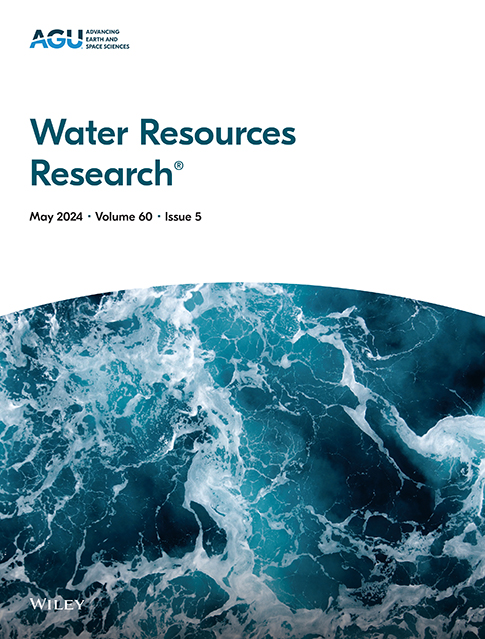穿过刚性新生植被稀疏阵列的床面剪应力和近床面水流
IF 5
1区 地球科学
Q2 ENVIRONMENTAL SCIENCES
引用次数: 0
摘要
植被是天然河流的重要组成部分,对水流和形态动力学过程有重大影响。尽管在表征植被水流的流动阻力方面取得了进展,但植被对河床剪应力(泥沙输运的主要驱动力)的影响仍需要更好的表征和理解。这项研究探讨了在粗糙河床上模拟植被的刚性新兴圆柱体稀疏阵列中的河床剪应力和近床流动特性。为此,采用了一种新颖的剪切板来测量冠层尺度的床面剪应力。这些测量结果与不同阵列密度的空间平均近床流动量进行了分析。结果表明,在水深不变的情况下,与无阻挡的明渠水流相比,所研究的圆筒形冠层提高了床面剪应力与水流速度之间的比率(即达西-韦斯巴赫床面摩擦因数),而且该比率随阵列密度的增加而增大。此外,阵列密度越大,近床流速越高。另一方面,没有观察到圆柱体阵列对近床湍流动能和湍流应力值的影响。最后,研究表明,在植被粗糙床层流中,近床层厚度是一个合适的参数,可用于调节床层剪应力与体积流速之间的比率。本文章由计算机程序翻译,如有差异,请以英文原文为准。
Bed Shear Stress and Near-Bed Flow Through Sparse Arrays of Rigid Emergent Vegetation
Vegetation is an essential component of natural rivers and has significant effects on flow and morphodynamic processes. Although progress has been made in characterizing flow resistance in vegetated flows, the impact of vegetation on bed shear stress, a key driver of sediment transport, still needs better characterization and understanding. This research, explores bed shear stress and near-bed flow characteristics in sparse arrays of rigid emergent cylinders mimicking vegetation over a rough bed. For this purpose, a novel adaptation of a shear plate was used to measure bed shear stress at the canopy scale. These measurements were analyzed in relation to spatially averaged near-bed flow quantities for different array densities. The results show that, for a constant water depth, the investigated cylinder canopy enhances the ratio between bed shear stress and bulk flow velocity (i.e., Darcy-Weisbach bed friction factor) compared to unobstructed open-channel flows, and that this ratio increases with array density. Moreover, higher near-bed velocities were observed for higher array densities. On the other hand, no influence of the cylinder array on near-bed values of turbulent kinetic energy and turbulent stresses was observed. Finally, it is shown that the thickness of the near-bed layer is a suitable parameter to scale the ratio between bed shear stress and bulk flow velocity in vegetated rough bed flows.
求助全文
通过发布文献求助,成功后即可免费获取论文全文。
去求助
来源期刊

Water Resources Research
环境科学-湖沼学
CiteScore
8.80
自引率
13.00%
发文量
599
审稿时长
3.5 months
期刊介绍:
Water Resources Research (WRR) is an interdisciplinary journal that focuses on hydrology and water resources. It publishes original research in the natural and social sciences of water. It emphasizes the role of water in the Earth system, including physical, chemical, biological, and ecological processes in water resources research and management, including social, policy, and public health implications. It encompasses observational, experimental, theoretical, analytical, numerical, and data-driven approaches that advance the science of water and its management. Submissions are evaluated for their novelty, accuracy, significance, and broader implications of the findings.
 求助内容:
求助内容: 应助结果提醒方式:
应助结果提醒方式:


